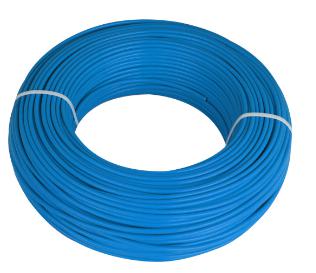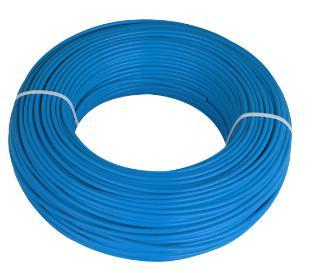In the intricate world of electrical engineering, choosing the right wire is not merely a matter of size or price. It’s about performance, resilience, and long-term safety. The demand for more robust and versatile wiring solutions has led professionals across industries to evaluate the differences between big Teflon wire and standard wire. Understanding these distinctions is crucial, especially in applications where failure is not an option.
Material Composition and Insulation Properties
At the heart of any wire’s performance lies its insulation. Big Teflon wire, often insulated with polytetrafluoroethylene (PTFE), offers a level of performance that standard materials like PVC or rubber simply cannot match. PTFE boasts a high melting point (around 327°C) and exceptional chemical inertness. It doesn’t degrade under UV exposure and remains stable in hostile environments.
Conversely, standard wires insulated with PVC or rubber are sufficient for routine applications but degrade faster when exposed to heat, chemicals, or harsh outdoor conditions. Their lower dielectric strength and melting points limit their use in high-demand applications.
Thermal and Chemical Resistance
One of the hallmark features of big Teflon wire is its unmatched resistance to extreme temperatures and aggressive chemicals. It performs reliably in environments ranging from -70°C to +200°C, maintaining integrity without becoming brittle or losing insulation properties.
Standard wire types begin to deteriorate rapidly under such thermal stress. The PVC may soften, melt, or emit toxic fumes, posing safety risks in industrial or mission-critical applications. Chemical resistance is another Achilles’ heel for standard insulation, which can crack or corrode when exposed to oils, acids, or solvents.
Mechanical Durability and Flexibility
Teflon insulation not only resists environmental challenges but also delivers excellent mechanical durability. Big Teflon wire offers high tensile strength and superior abrasion resistance, making it ideal for applications with movement, friction, or vibration.
Standard wires, though easier to manufacture and more pliable in short runs, are often less durable under mechanical stress. Their insulation can tear or deform, particularly when pulled through conduits or bent repeatedly. In contrast, Teflon-coated wires retain flexibility without compromising structural integrity.
China Big Teflon Wire Manufacturer
Electrical Performance and Safety
When it comes to electrical performance, big Teflon wire stands out with high voltage tolerance and exceptional insulation resistance. It ensures minimal signal loss and superior transmission clarity, critical for data-sensitive environments such as aerospace or medical equipment.
Safety is another decisive factor. PTFE is inherently flame-retardant and non-reactive. In the event of combustion, it emits significantly less smoke and fewer toxins than PVC. Standard wires, while meeting minimum regulatory requirements, cannot guarantee the same level of fail-safe operation in hazardous scenarios.
Typical Applications and Industry Use-Cases
Big Teflon wire is a staple in demanding fields like aerospace, military, telecommunications, and high-end automotive systems. These sectors require materials that can withstand intense operational stress without compromising performance or safety.
On the other hand, standard wires dominate residential, automotive, and commercial markets where cost-efficiency and moderate performance are sufficient. They’re ideal for everyday devices and infrastructure, but not suitable for mission-critical environments.
Cost, Availability, and Long-Term Value
Cost is where the divergence becomes obvious. Big Teflon wire typically comes at a higher upfront price due to the complexity of materials and manufacturing. However, its longer lifespan, reduced need for maintenance, and superior performance make it a more cost-effective choice in the long term.
Standard wire, while cheaper and more readily available, may lead to frequent replacements or failures under extreme conditions—resulting in hidden costs over time, especially in industrial settings.
Conclusion
The difference between big Teflon wire and standard wire goes far beyond insulation material. From thermal resilience to electrical reliability, big Teflon wire proves indispensable in high-performance environments. While standard wire remains a practical choice for routine applications, professionals should weigh factors like safety, longevity, and environmental exposure before making a selection.
Choosing the right wire isn’t just a technical decision—it’s a strategic one. In scenarios where failure is costly or dangerous, big Teflon wire is the smart investment.








